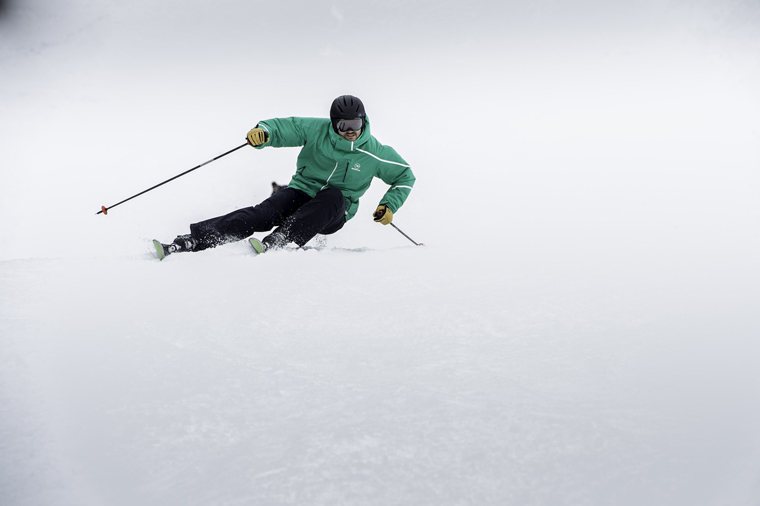The evolution of carving (and how to do it right)


Every now and then the ski industry creates some new technology which leaves everyone wondering why it hadn’t been thought of before. Carving skis have a bit of a surprising history, sitting on designers’ shelves for many years before finally getting the green light for production.
Get low… | Courtesy of RossignolIn 1994, I was sponsored by Kneissl and they gave me a pair of Ergo skis. At the time they looked ridiculous, with a tail so fat that they looked like a set of flippers. I felt quite unsure about using them and remember standing in the lift queues in Val d’Isère being mocked by racers on a daily basis. They weren’t laughing once they saw how fast I was going!
The history of carving skis dates back to 1948 when a couple of guys in Winter Park tried to make a turnier slalom ski by slimming the waist down to 52mm. The ski turned sensationally but wouldn’t stop turning so after a run each, the skis were put away and probably used as firewood. They never considered widening the tip or tail as skis were made from standard four-inch timber and this would have been a more involved process. It was nearly 40 years before the idea surfaced again.
In 1984, at the request of one of its executives, Olin developed a ski aimed at making learning easier. The initial prototype wouldn’t fit in Olin’s ski production presses so they did away with one edge, leaving a straight ski on the outside. They patented the design, produced 150 pairs and took them along to the SIA trade show in 1986. Unfortunately, retailers thought they looked crazy and designs were shelved.
From 1986 to 1989, Olin teamed up with Kneissl and Trak to form Tristar Sports. At the time, Kneissl was producing Bigfoot skis. This short skate-like ski could be worn with shoes or ski boots and they were all the rage. It’s possible that Olin’s designs were seen by Kneissl as they went on to create the Ergo ski in 1992. It was 180cm with a turning radius of 14 metres. For recreational skiers and to me personally, it was a game changer.
Elan’s ‘sidecut extreme project’ (SCX), initiated in 1988, spent several years working out how to create the right dimensions for a perfect turn. In 1993, they brought the S-Ski to the trade shows and it caught the imagination of US ski schools who started using the ski as an accelerated teaching tool. All the manufacturers started to pay attention.
When I was given a race prototype of the Ergo to try in 1994, I found the difference unbelievable. I was creating angles and speeds through gates that were eye-catching. Every turn was a new experience. The faster you went, the more you had to commit to throwing yourself into the turn. This resulted in mistakes and crashes as I tried to find the perfect balance point!
The technique for skiing on today’s skis is an amalgamation of new and old styles, but with the same core principles.
Carving is now accessible to all. It’s an amazing feeling that goes hand in hand with going fast and the technology is still evolving. Rocker shapes and ever greater carving sidecuts are opening up the mountain to even more extreme performance and play.